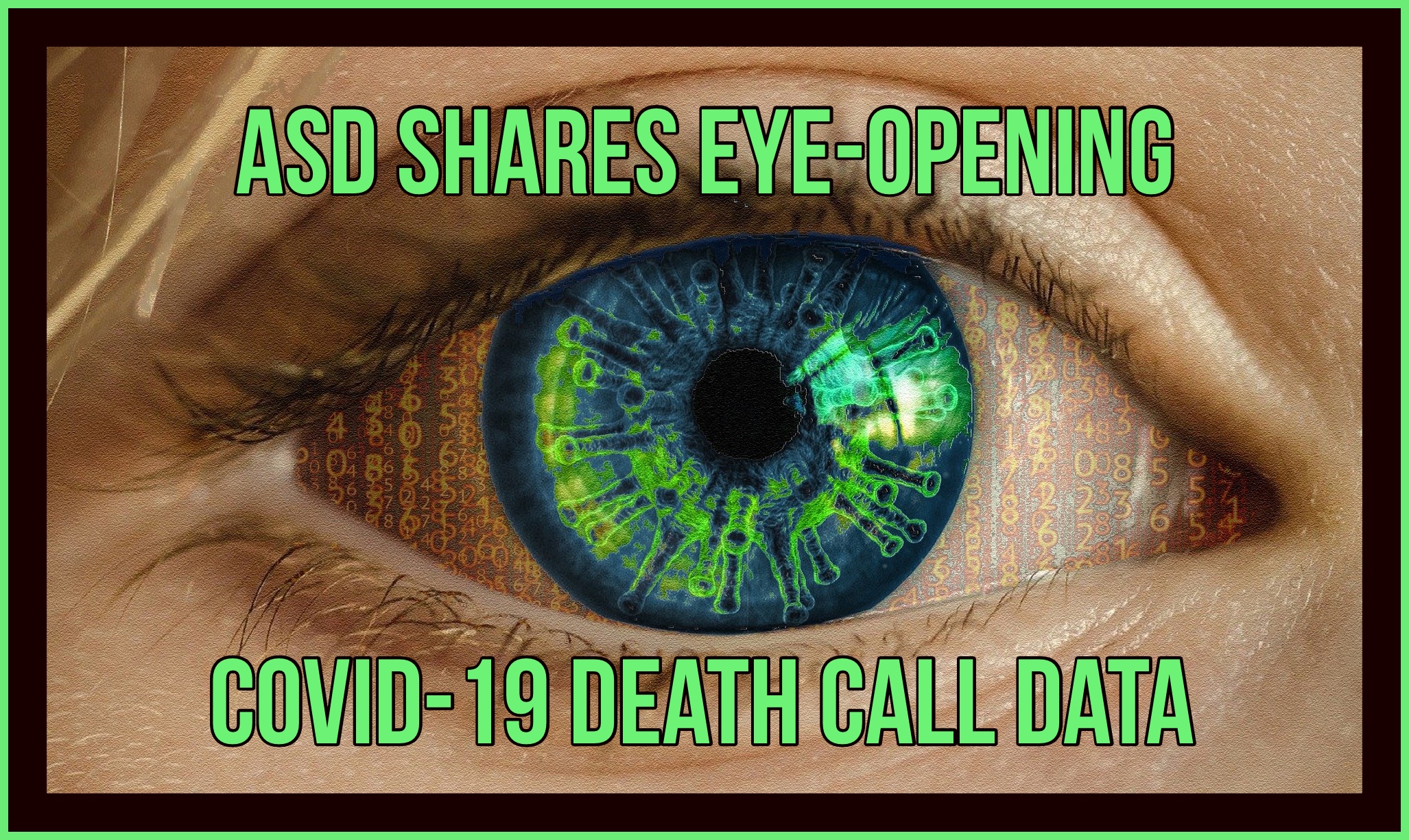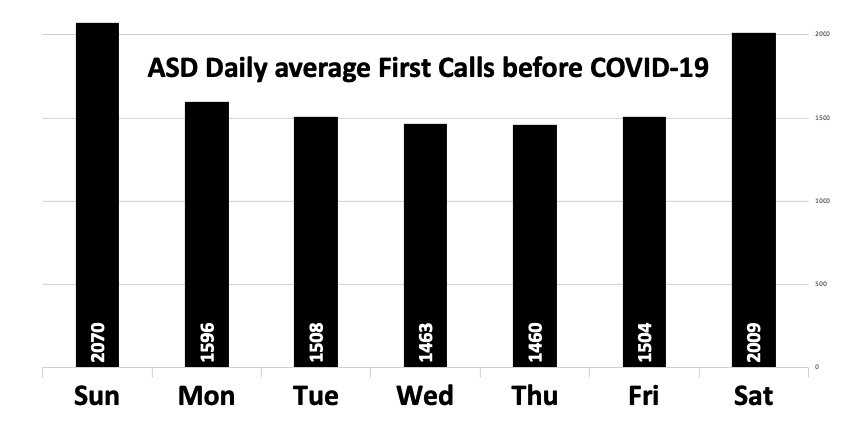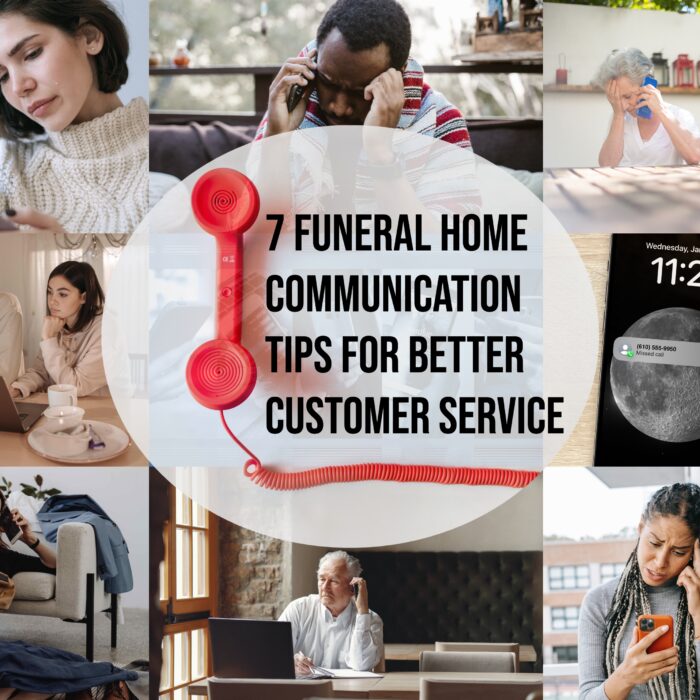Jun 15, 2021

ASD Vice President and Family-Member Owner, Kevin Czachor, was recently published in Kates Boylston Publications’ Funeral Directors Guide to Statistics (2021 issue). In the article, Kevin unpacks statistics collected by ASD that reveals how the pandemic impacted funeral home telephone activity. By tracking ASD’s death call data, Kevin is able to help shed light on data that was often obscured by delayed or misleading information. The article also examines the impact of the pandemic on shopper-related calls and ASD’s transition to a remote work force.
For more of the latest funeral home statistics and trends, we highly recommend reading the Funeral Directors Guide to Statistics in its entirety. The latest edition features the most up-to-date statistical information in the funeral profession and provides readers with knowledge to better understand buying trends and navigate changes in consumer behavior as a result of COVID-19. You’ll find a wide range of articles that cover topics such as cremation trends, digital marketing, preplanning and much more. Click here to learn more or order your copy.
What ASD’s Death Call Data Reveals about the Pandemic

Introduction
Since the start of the pandemic, we have all heard the phrase ‘essential worker’ repeated multiple times in the media. In most cases, it is used to identify healthcare workers and first responders, but rarely have funeral directors received the same acknowledgement. In our profession, many have commented on how deathcare workers have been largely overlooked for the critical services they are providing. I would argue that it is not just funeral directors and embalmers whose efforts have gone under the radar, but the entire funeral profession as a whole.
Most people wouldn’t think about how a funeral home answering service might be impacted by a mass casualty event such as the pandemic we are all living through. My family’s answering service, ASD – Answering Service for Directors, has been an invisible witness on the frontline of the pandemic. While our staff may not have seen the same horrific images as funeral directors, they heard countless stories from families who lost loved ones to COVID-19. Our staff were often the ones who had to tell them when a funeral home could not serve their family because they were at or over capacity. As a company, we have been forced to adapt to this pandemic in ways we never could have imagined previously.
In April 2020, when our company was in the midst of handling a surge of calls from the New York area related to COVID-19 deaths, I noticed there was a great deal of speculation in the media over the number of COVID-19 deaths that were directly caused by COVID-19. Many were questioning the numbers released by the CDC. Some believed the number was being inflated while others were convinced the pandemic deaths were being underreported. I decided at that point I would begin tracking ASD’s death call data in an effort to construct a clear comparison of how many more deaths were occurring presently as opposed to the same time frame last year.
ASD handles incoming telephone calls for more than 8,500 funeral homes across all 50 states and parts of Canada—approximately 45 percent of all funeral homes in the country. On average, funeral professionals call forward their phone lines to ASD 16 hours a day on weekdays. On Saturdays and Sundays that number is even higher. When you combine this with our company’s 45 percent market share, ASD statistics represent 30 percent of all deaths in the United States. This gives our company the unique ability to accurately determine how many more deaths have occurred than average since before the pandemic.
Current Deaths compared to Pre COVID-19
The graph below is based upon the change in the number of incoming funeral home phone calls our company handles on a week to week basis. By comparing our current numbers to our pre-COVID-19 statistics, we have been able to provide a detailed assessment of how COVID-19 has impacted the national fatality rate since the start of the pandemic.
After creating the first version of this chart, I realized it was necessary to adjust several variables that would otherwise incorrectly skew the data. Several steps were taken to ensure the data graphed above provides the most accurate representation of our statistics.
Adjusting for Repeat Callers
During the peak of the pandemic in April, funeral homes in New York City became overwhelmed when the number of deaths occurring in the city exceeded their capacity. One of the saddest things to occur during that time was the large number of grieving families who were forced to desperately call multiple funeral homes in search of one with space available and could assist them. Families were calling literally every single funeral home in the city and surrounding suburbs, even firms over an hour away. This resulted in our Call Specialists taking the same death call from the same family for multiple clients.
From a data perspective, including every death call our staff handled during the pandemic would not present an accurate understanding of the actual number of fatalities occurring, as many individuals would be counted more than once. To adjust for this, I removed any death call that had a repeating Caller ID associated with their phone number. This modification ensured that each individual death was only counted once when graphing our data.
Adjusting for Holidays
On major holidays, many funeral homes call forward their phone lines to ASD all 24 hours of the day. In addition to this, most people only call a funeral home on a major holiday when a death occurs. As a result, we always see a surge in the number of death calls we handle on these dates. I decided to remove holidays from our graph as I felt they might cause confusion. It would be easy for one to assume more deaths were occurring on these dates when in actuality the large spikes are caused by ASD handling calls for more funeral homes than average.
Adjusting for Call Volume
One of the most common questions we are asked when sharing our death call data is: “How do you know you’re not handling more death calls simply as a result of more funeral homes relying on your service during the pandemic?” This question is the precisely the reason I made the decision to normalize ASD’s numbers by adjusting for call volume. Meaning, if we had an increase of 20 percent in total phone calls for one day, we should adjust the number of deaths on the graph to compensate for that 20 percent increase. If we didn’t normalize the numbers, the death numbers would’ve been artificially shown as being much higher than what you see on our graph above.
Weekdays vs. Weekends

This graph displays the average number of death calls ASD handled each day of the week before the COVID-19 pandemic. On average, we handle more death calls on the weekends because more funeral homes have their phone lines forwarded over to our answering service. For this reason, our Current Deaths Compared to Pre COVID-19 graph is based on the average number of calls handled on a week to week basis.
Impact of Pandemic on Shopper Calls
When deciding what specific ASD data to publish for this guide, one of my biggest considerations was determining what information would provide the most useful metrics to funeral directors. Since before the pandemic, ASD has been tracking the number of shopper calls we handle for funeral homes. We have created solutions and technology specifically to help funeral professionals capture more business from price shoppers. For this reason, ASD has many built-in metrics that allow us to easily measure the frequency of these calls over time. It has been interesting to see how the pandemic has impacted these figures.
On the graph above, you can see there has been a gradual increase in the number of shopper calls ASD has handled since 2016. In June 2016, an average of 10 percent of incoming calls answered by ASD were pricing calls. By 2021, this figure has increased to 14 percent. While isn’t a huge percentage, it is interesting to note this number has continually trended upwards. As more people than ever are using the internet to research and compare different funeral options, it seems likely this number will continue to steadily rise.
When looking at how the pandemic has impacted shopper calls, it is clear that the peak of the pandemic in April 2020 caused the largest surge in the number of price shopper calls. This is the biggest spike in price shopper calls ever recorded in our company’s 49-year history. Nearly a quarter of all incoming calls we handled during that time period were from callers inquiring about funeral costs and options. This figure has remained elevated since that time, reaching 20 percent on multiple occasions whereas before the pandemic, this only occurred twice within a four-year time span.
In December 2020, the rising death toll in the United States surged past the peak of spring. While in April, the deaths were concentrated in New York City and New England, COVID-19’s second wave was felt across the country. This is why the peak on the graph above is less sharp. With the second wave, the rise in the number of price shopper calls was spread out over a longer period of time, namely from early December 2020 through late January 2021.
Transitioning to a Remote Workforce Model
Funeral homes across the country rely on ASD to be there to answer their phones no matter the circumstances. In 2014, ASD began providing our staff with computers so they could assist with calls from their homes in the event of a major snowstorm, hurricane or other event preventing them from reaching the office. Initially, we offered these computers to staff with the most seniority and over time we grew our home computer number to include every member of our staff employed with ASD for nine months or longer.
One of the most essential components to establishing a remote work force is ensuring these stations are tested often so we could troubleshoot any issues that might occur using a VoIP link system. Since 2015, ASD has consistently had 20 percent of staff or more working from home at any given time. This is reflected on the graph below. Our goal was to ensure that if connectivity problems arose and impacted our home users, we still always had the majority of our employees working in-house. As time went on and our systems became more advanced, we gradually increased the number of home users.
On the graph above you can see several spikes prior to the pandemic when our home user count rose above 50 percent. These spikes were caused by localized snowstorms that required a larger majority of our staff to work from home. We could not know at the time that these weather events would serve as dry runs for how our company would handle the challenges brought on by COVID-19. You might also notice some instances on the graph when the number of home users dropped. These were occasions when ASD was performing routine maintenance on our home computer system, requiring the majority of our staff worked to work in-house.
On Friday, March 6th, 2020 we learned that a person in our local area had tested positive for COVID-19. This was the moment when everything changed for us here at ASD. Upon learning this news, ASD began operating with an abundance of caution in an effort to protect the health and well-being of our employees as well as their families. We instructed every employee who had a home computer to begin working from home until further notice. We were able to make this transition seamlessly due to extensive testing and upgrades we have performed on our VoIP link system.
In the weeks that followed, ASD’s Technical Team worked around the clock to further expand our company’s remote capabilities. ASD began deploying home computers to our entire staff, bringing our home user count to over 250 employees. You can see this massive shift reflected on the graph above. While we have continued to offer training in-house throughout 2020 and into 2021, remaining open as a government-authorized essential business, more than 90 percent of our workforce continues to work remotely.
Conclusion
Since the start of the pandemic, there have been several occasions where I have questioned the legitimacy of information published by both the CDC and the media. What we were observing in our call center did not always line up with what was being reported, especially during the summer months. Due to the political nature of the world today, no one knows what information they can trust. My goal in publishing ASD’s independent statistics was to provide real-time metrics to help shed light on data that was often obscured by delayed or misleading information. It is very difficult to fully understand a crisis when you are in the middle of it and we are still in the middle of it as this is being typed. As time goes on, we will be able to draw more concrete conclusions.
Kates Boylston Publications, April 2021
About the Author

Kevin Czachor, Vice President & Family-Member Owner of ASD – Answering Service for Directors, has helped develop telecommunication strategies for more than 45 percent of funeral homes in North America. With more than 25 years of experience, Kevin meets with directors regularly to share his expertise on utilizing mobile technology to streamline tasks, enhance communication and increase productivity. Kevin delivers seminars annually on the important connection between communication technology and customer service, focusing on quality control and training. He has also contributed articles on these subjects to many funeral publications.
RELATED READING
PODCAST: Catching the Phones During COVID
UPDATE: What ASD’s Latest Death Call Data Reveals about COVID-19
ASD Staff Reflect on Answering Calls During the Peak of the COVID-19 Pandemic
About The Author
Jess Farren (Fowler)
Jess Farren (Fowler) is a Public Relations Specialist and Staff Writer who has been a part of the ASD team since 2003. Jess manages ASD’s company blog and has been published in several funeral trade magazines. She has written articles on a variety of subjects including communication, business planning, technology, marketing and funeral trends. You can contact Jess directly at Jess@myASD.com






